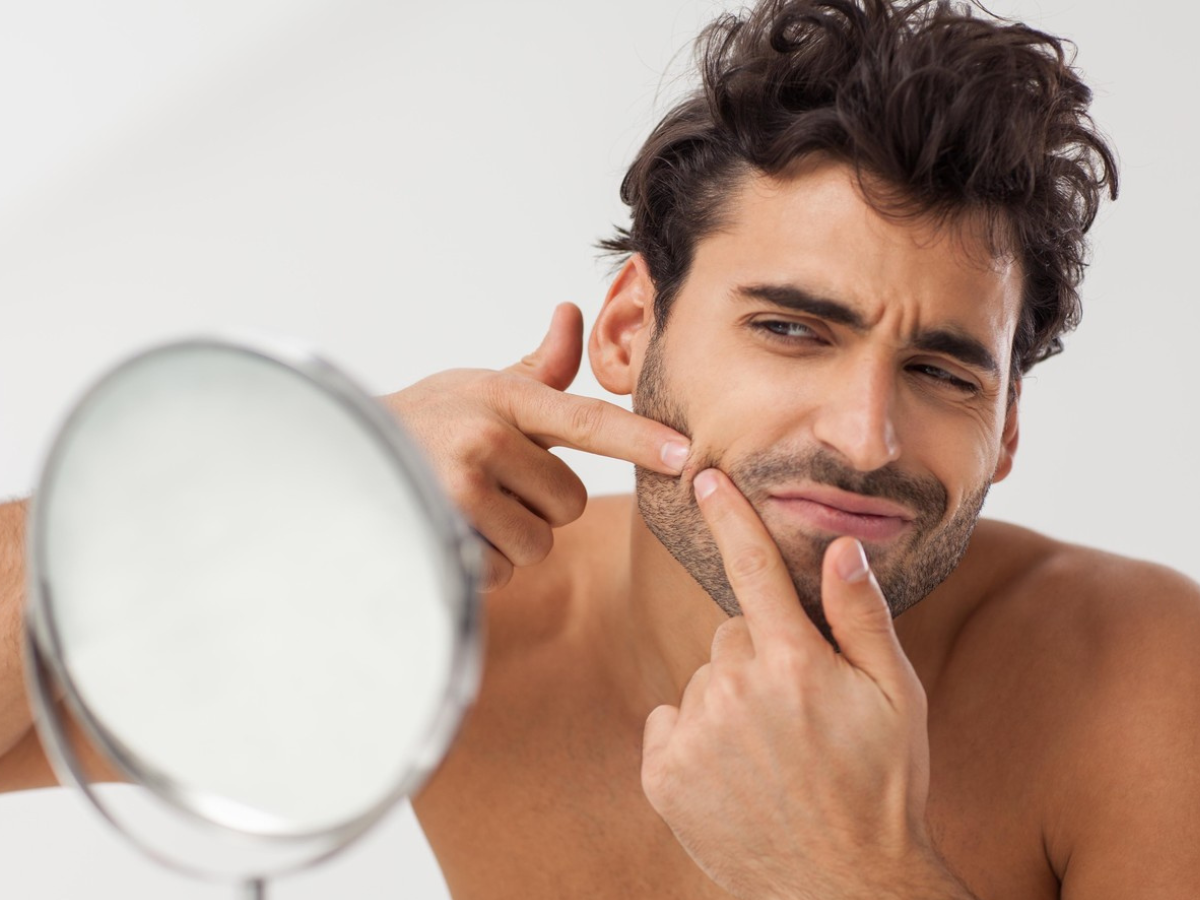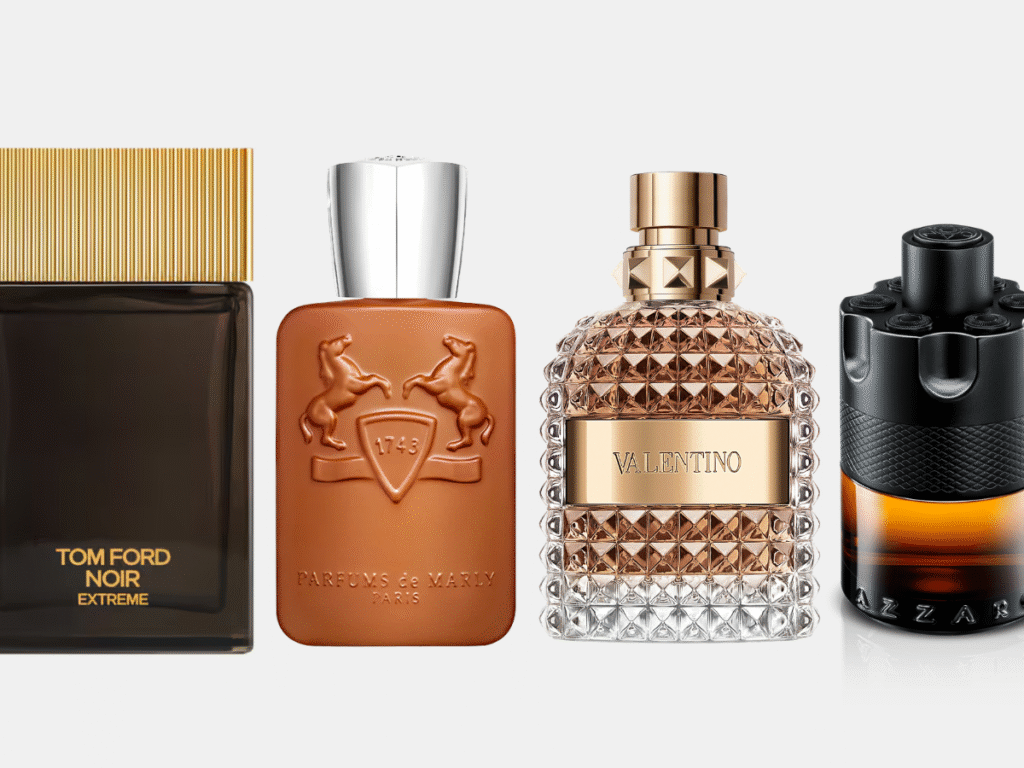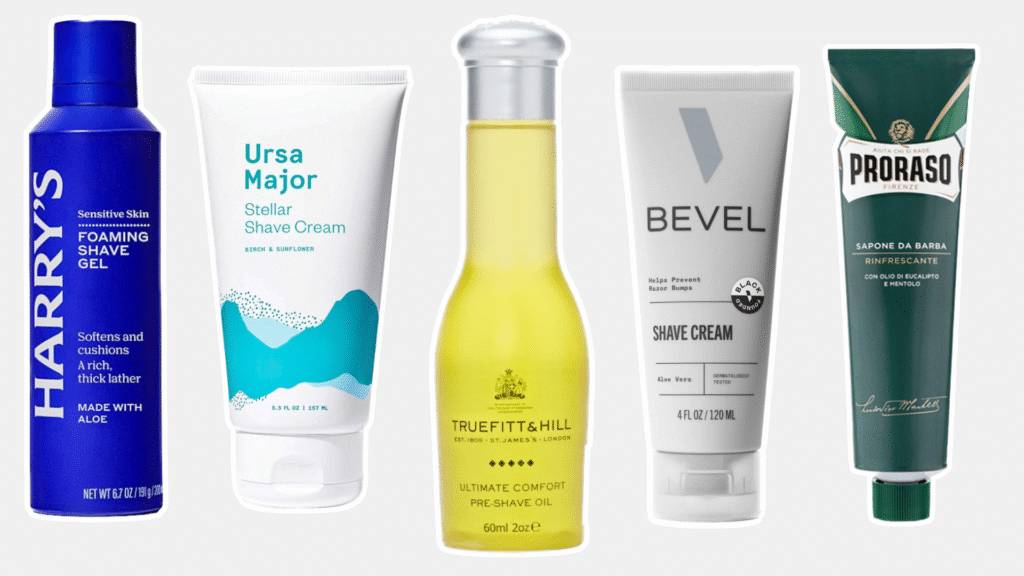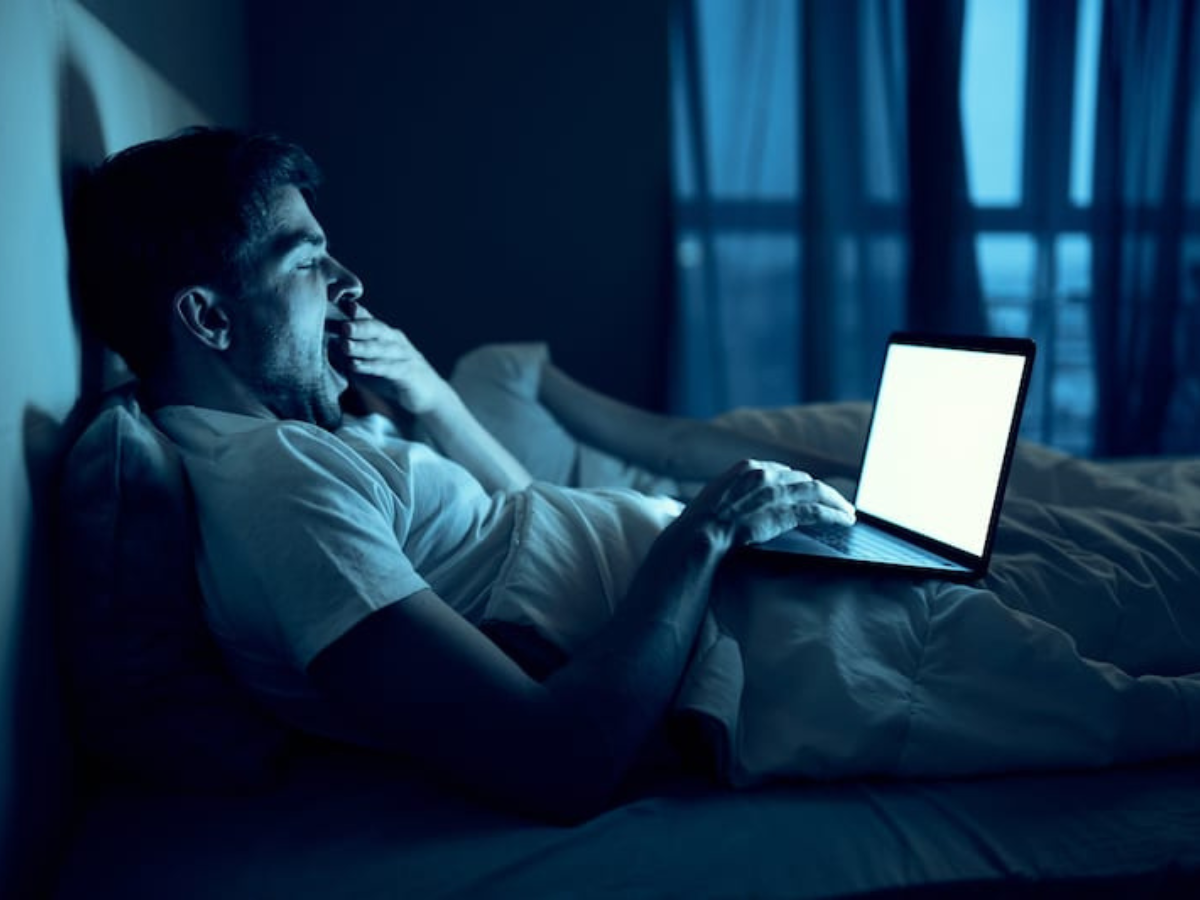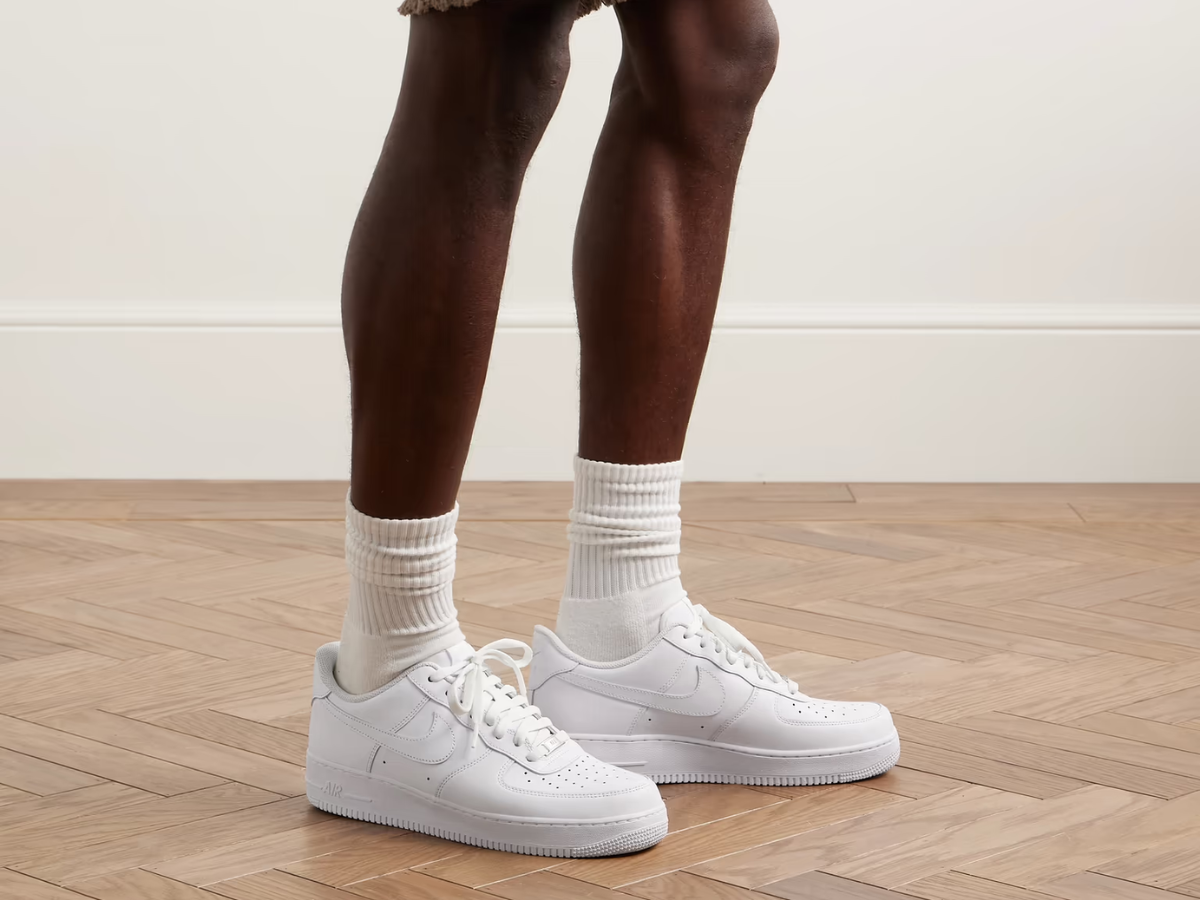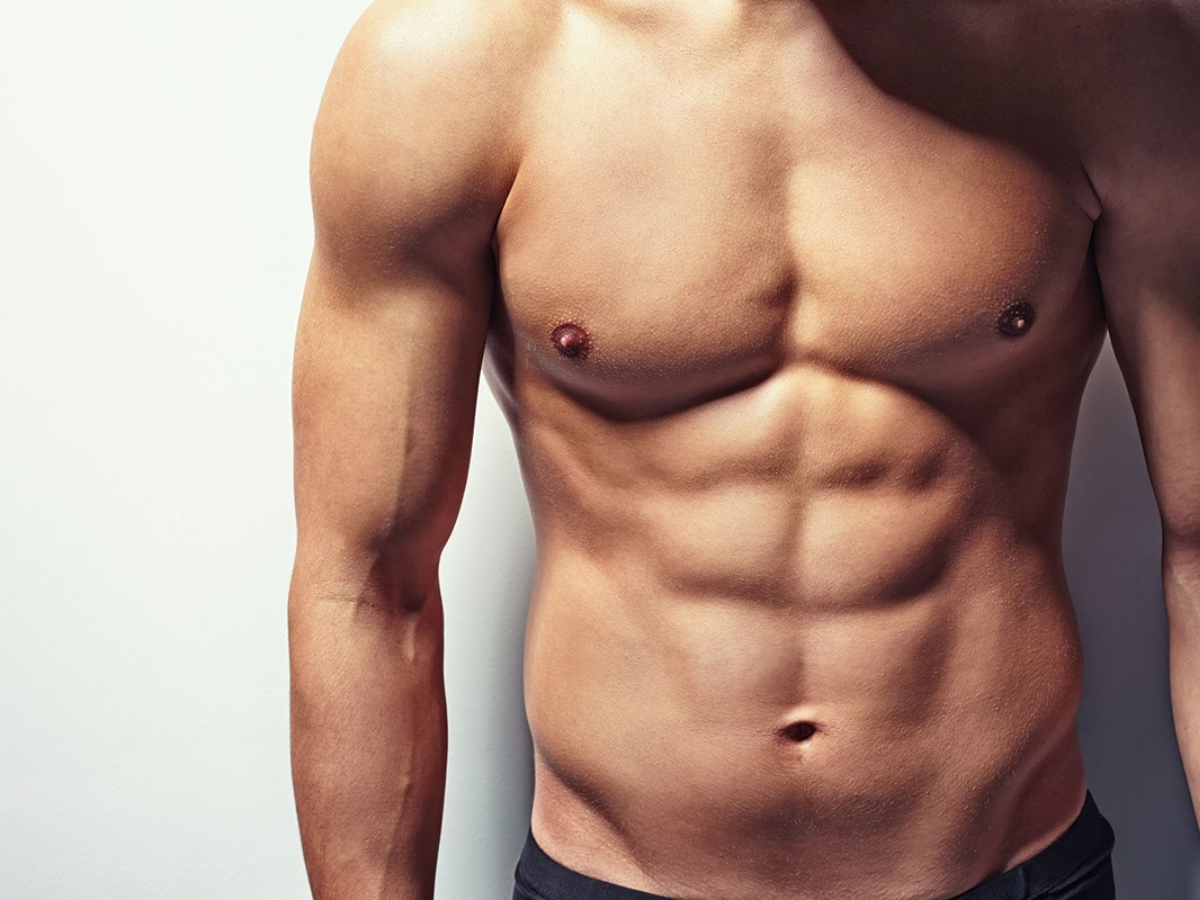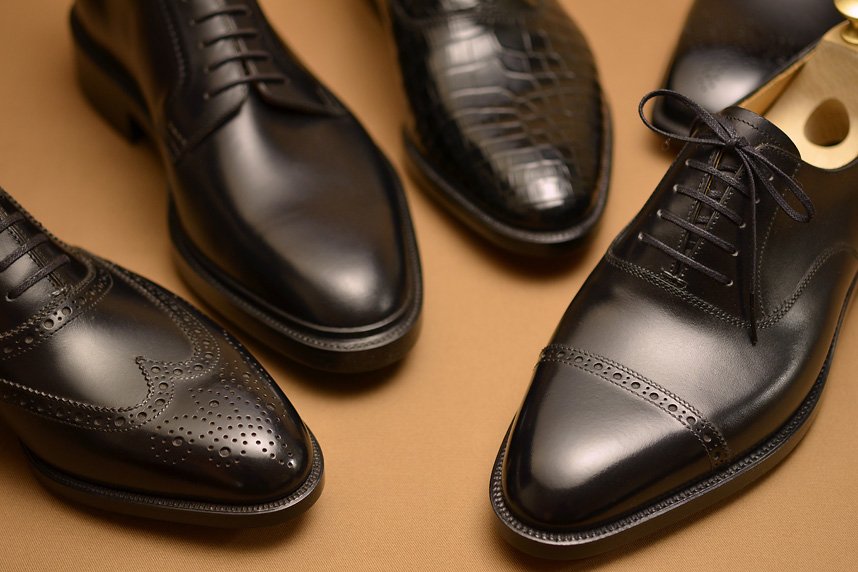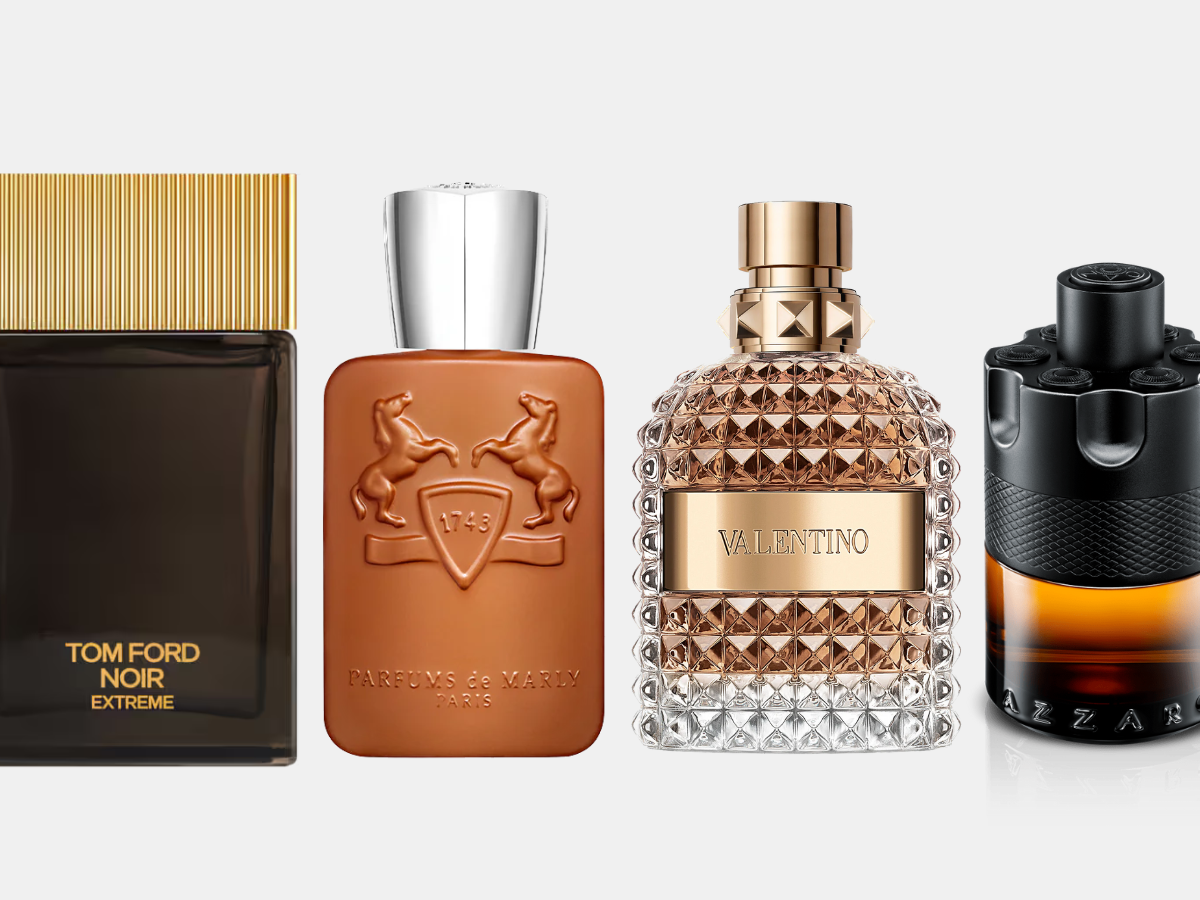Just rolled over, checked your reflection, and there it is. A shiny, angry pimple settling right in the middle of your face like it pays rent. Cute. Maybe you’re used to the occasional breakout popping up uninvited, or maybe this little gremlin is your first in a while. Either way, the panic is real, and the question hits fast: how the hell do I get rid of this before morning?
Let’s not pretend this is just a teenage rite of passage. Adult breakouts are real and can ruin your morning routines, first dates, job interviews, and your confidence to make eye contact. It’s not just about vanity — showing up with a volcano on your chin can significantly damage your self-esteem. So if you’re currently Googling miracle cures while hovering over the sink with a tube of toothpaste, take a breath. We’ve got you. Here’s what you actually need to do to send that pimple packing overnight.
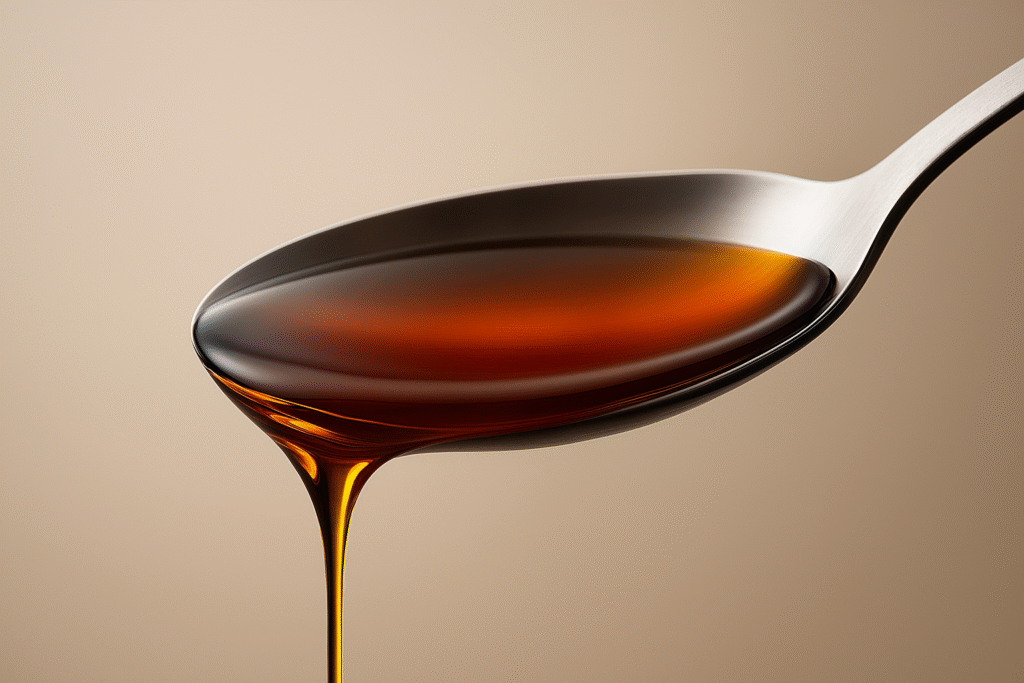
Alright, let’s get straight to the point. You have a pimple, a deadline, and limited time. Before you start picking, popping, or praying it away, here’s what you actually need to do to give that unwanted guest the boot — quickly, and without damaging your skin in the process.
This kitchen MVP isn’t just for your gut health or vinaigrettes — it’s also a reliable backup when a pimple decides to crash the party. Apple cider vinegar has natural antibacterial and anti-inflammatory properties that can help dry out the blemish and eliminate the bacteria causing the breakout. Sounds like magic in a bottle, right? Kind of — but don’t pour it raw onto your face like it’s skincare magic. ACV is potent, and if you don’t dilute it properly, it can irritate your skin and make things worse. Gentle is the way to go here.
How to use it:
- Mix 1 part apple cider vinegar with 3 parts water — always dilute it.
- Soak a cotton swab or pad in the mixture.
- Dab it gently onto the pimple (no rubbing or going full war paint).
- Let it sit for 10 minutes, then rinse off with lukewarm water.
- Use once a day max — no need to overdo it.

Ah yes, the soothing green goo your mum probably used after a sunburn — it turns out it’s also a gentle weapon in the fight against breakouts. Aloe vera is packed with anti-inflammatory and antibacterial properties, making it ideal for calming angry, red pimples without being too harsh on the skin. It won’t necessarily make the zit disappear overnight, but it can help reduce swelling, ease irritation, and speed up healing — all while being gentle on your skin barrier. If you’re dealing with a breakout that feels like it might escalate, aloe is the peacekeeper you need.
If apple cider vinegar is the rough-around-the-edges friend who gets results, tea tree oil is the calm, focused one who handles things with quiet precision. This essential oil is well known for its natural antibacterial and anti-inflammatory powers, making it a top-tier choice for targeting pimples without involving your entire face in the battle. Just a tiny bit goes a long way — dab it (diluted!) on the spot, and it works to dry it out, reduce redness, and eliminate bacteria, all without the harsh sting of traditional acne treatments.
But here’s the deal — tea tree oil isn’t something you want to go rogue with. It’s powerful and can irritate your skin if not diluted properly. Think of it like a sniper, not a shotgun. Use it with purpose, not force. If used correctly, it’s a reliable overnight treatment that not only targets the breakout but also helps prevent future flare-ups. Clear, precise, and effectively targeted — that’s tea tree oil in a nutshell.
When it comes to tackling pimples from the inside out, zinc is the low-key hero your skin didn’t know it needed. This mineral helps fight inflammation, regulate oil production, and support your body’s natural healing process — all useful when dealing with breakouts. While it’s not an instant fix like a spot treatment, adding a zinc supplement to your routine can help reduce how often and how bad pimples get over time. Just don’t go overboard — stick to the recommended dose, choose something like zinc gluconate or picolinate, and check with your doctor if you’re unsure. Clearer skin also starts from within.
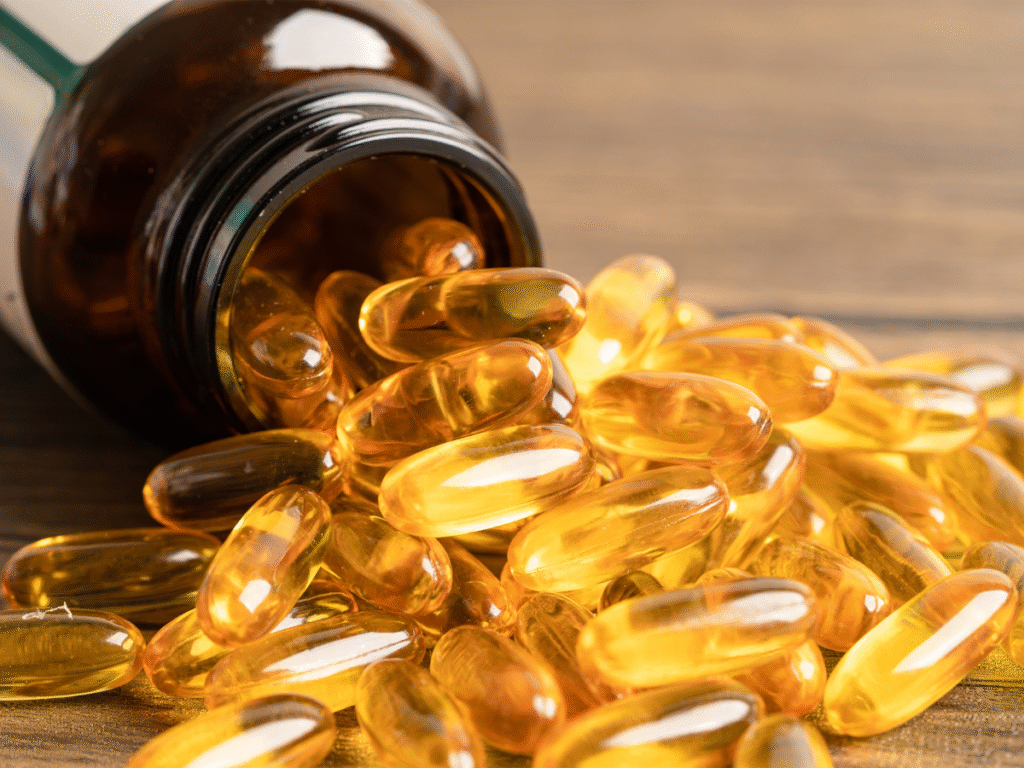
It may seem a bit surprising, but fish oil can significantly improve your skin — especially if you’re dealing with stubborn breakouts that won’t go away. Packed with omega-3 fatty acids, fish oil helps reduce inflammation, balance hormones, and reinforce your skin’s natural barrier. In other words, fewer breakouts, less redness, and skin that’s better able to heal itself without panicking. Unlike those quick-fix spot treatments, this works from the inside out — slow and steady, but worth it.
Of course, it’s not an instant fix. You won’t take a capsule tonight and wake up with flawless skin tomorrow. But if you stay consistent and make it part of your daily routine, your skin will thank you in the long run. Just be sure to choose a high-quality supplement (check for purity and sustainability, if you’re into that), and maybe avoid the fishy burps if you can. And no, eating a whole box of fish fingers doesn’t count — sorry.
That calming cup of green tea you sip to unwind? It turns out it might also benefit your skin. Rich in antioxidants like EGCG (no one needs to know the full name), green tea helps reduce inflammation, combat acne-causing bacteria, and regulate hormone levels that can lead to breakouts. Whether you’re drinking it or applying it directly to your skin, it’s a gentle, natural option that doesn’t have the harshness of stronger treatments. Brew a bag, let it cool, and dab it on your pimple with a cotton pad — or simply drink a few cups a day and let it work from the inside out. It’s soothing, straightforward, and swapping out that extra coffee for a skin-friendly tea isn’t a bad idea.
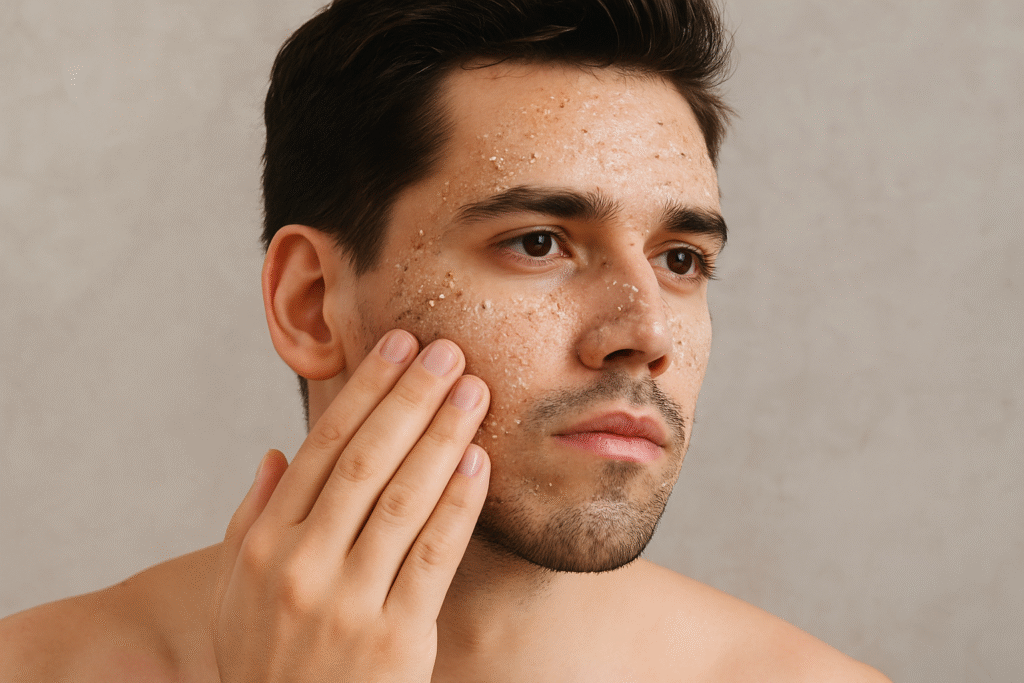
If your skincare routine stops at cleanser and moisturiser, it might be time to add a secret weapon to your lineup: exfoliation. Dead skin cells often build up on the surface, clogging your pores and causing breakouts when you least expect it. By exfoliating regularly, you help clear away that debris, keeping your skin smooth, your pores less irritated, and your breakouts much less frequent. Plus, your serums and spot treatments can truly penetrate and work effectively without fighting through a layer of dead skin. It’s like giving your face a fresh start — literally.
But before you start going at your face like you’re sanding a piece of furniture, slow down. Exfoliating is all about balance. Overdoing it can strip your skin, mess with your barrier, and make things even worse. Stick to once or twice a week, tops — three if your skin can handle it. Gentle chemical exfoliants with AHAs or BHAs are great options, especially for acne-prone skin. Or go with a mild physical scrub, just avoid anything that feels like gravel. Treat it like maintenance, not punishment, and your skin will reward you with that glow you’ve been chasing.
Witch hazel has been around forever — and for good reason. It helps soothe inflammation, reduce redness, and tighten pores without being too harsh on your skin. Just ensure you’re using an alcohol-free version, or you might end up drying things out more than benefiting. A quick dab with a cotton pad is all you need to let this natural toner work its magic.
When your skin’s acting up, a face mask can serve as a small fix. Clay or charcoal masks are excellent for pulling dirt out of your pores, while soothing options with aloe or green tea help calm them down. Want a DIY solution? Mix a bit of raw honey with a pinch of cinnamon — honey’s antibacterial, and cinnamon’s anti-inflammatory, making them a perfect pair for irritated, breakout-prone skin. Just don’t go full spa mode every night — once or twice a week is enough. A mask won’t work miracles overnight, but it will help your skin relax and start to heal.
We’re not saying dairy is the enemy, but if you’re constantly breaking out and can’t figure out why, it might be time to give your latte habit a second look. For some people, dairy — especially milk — can trigger inflammation and disrupt hormones that cause breakouts, especially around the jawline and chin. You don’t have to go full vegan, but cutting back on milk, cheese, and ice cream for a couple of weeks could make a noticeable difference. Your skin might breathe a little easier — even if your pizza cravings don’t.
You might not think your lunch is plotting against your face, but high-glycemic foods — like white bread, sugary snacks, and processed carbs — can spike your blood sugar and trigger a chain reaction that leads to breakouts. It’s like giving your skin a sugar rush it never asked for. Swapping in low-GI options like whole grains, veggies, lean protein, and healthy fats can help keep things balanced, both on your plate and across your face. No need to eat like a monk, just be smart about what you’re fuelling your body with — your skin’s paying attention.
We get it — life’s busy, and stress happens. But when your mind’s racing, your skin often reacts. Stress messes with your hormones, increases oil production, and makes existing breakouts stick around way longer than they should. The result? More pimples, more redness, and less chill. Your skin isn’t just wear your skincare routine — it reflects your lifestyle as well.
That’s why carving out time to unwind matters. Whether it’s a quick workout, some fresh air, journaling, or just putting your phone on do-not-disturb for 30 minutes, giving your brain a break can work wonders. It won’t replace your spot treatment, but it will make your skin less reactive — and your vibe much calmer.
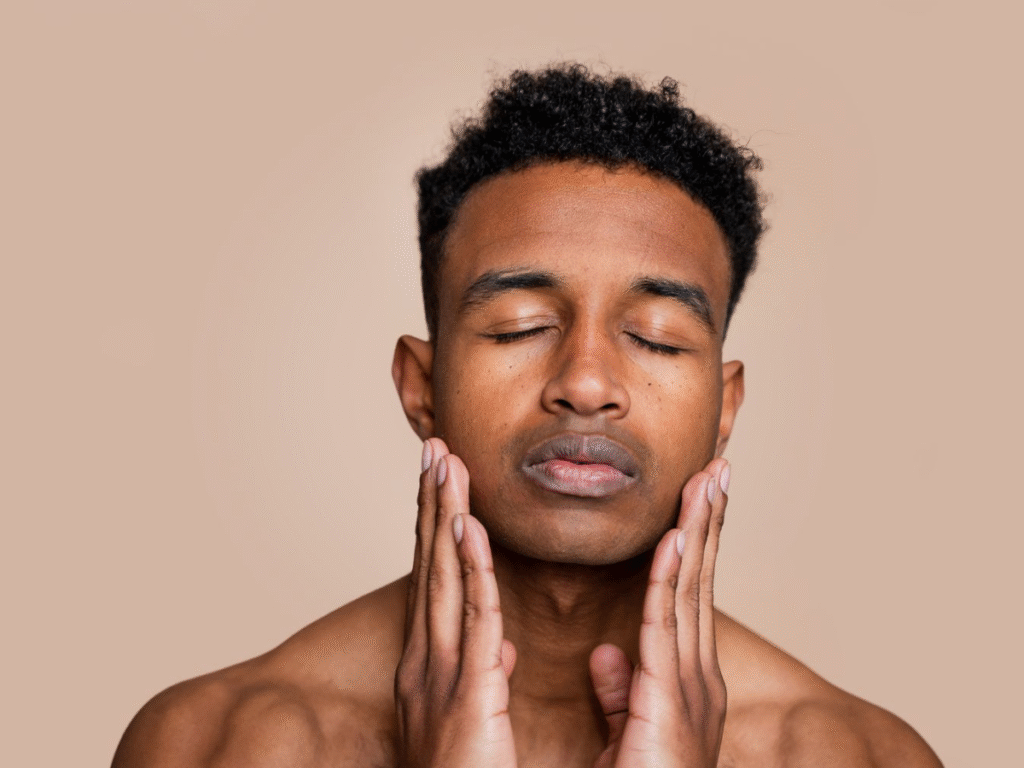
Sometimes, even when you do everything right — eating well, sleeping enough, and caring for your skin — breakouts still appear as if they own the place. If that happens, it might be helpful to take a step back and see the bigger picture. Everyone’s skin is different, and what works wonders for one person might do nothing for someone else. Don’t hesitate to consult a professional if things feel out of control — sometimes a fresh perspective is exactly what your skin needs.
It’s not just your gains benefit from a solid workout — your skin does too. Increasing your heart rate improves circulation, delivers more oxygen and nutrients to your skin, and helps flush out toxins that can otherwise build up and cause breakouts. Plus, exercise helps balance hormones and reduce stress — two main factors in the acne battle. So yeah, hitting the gym, going for a run, or even doing a solid home workout does more than just burn calories — it clears your mind and your skin.
But here’s the catch: sweat is great for detoxing, but it’s not so great if it’s left on your face. That post-workout glow can quickly turn into clogged pores if you don’t wash up properly. Always cleanse your face after exercising, switch out sweaty towels, and avoid touching your face during your workout. Keeping it clean before and after training is essential to ensure your sweat sessions benefit your skin rather than harm it.
Also called pimple patches, these tiny helpers are the undercover agents of acne care. Place one on a whitehead before bed, and by morning you’ll be amazed and a bit grossed out at how much gunk it extracted. Hydrocolloid dressings absorb fluid from the pimple while shielding it from bacteria, dirt, and — let’s be honest — your fingers. They’re excellent for reducing swelling, flattening spots, and stopping you from picking (which, let’s face it, we all need help with). Just clean the area, apply it, and let it do its job while you sleep. Minimal effort, maximum reward.
Popping pimples might feel satisfying in the moment, but it’s often a quick way to scars, irritation, and regret. Instead of turning your face into a battleground, opt for a spot treatment. These targeted formulas work by drying out the blemish and reducing inflammation—without the mess or long-term damage. Here are the top spot treatments you’ll be able to find in your skincare aisle or at your dermatologist.
- Benzoyl Peroxide – Known for its bacteria-fighting power, this ingredient penetrates deep into the pores and eliminates impurities. Fair warning though: it’s a bleach bomb for your pillowcases, so use it wisely.
- Salicylic Acid – A gentler option that exfoliates inside the pore and reduces redness without fabric damage. Perfect for maintaining smoothness and a low profile.
- Sulfur – The classic favourite. It absorbs excess oil and soothes the area, making it a dependable choice if you need quick results. Look for one with a dab-on applicator to avoid spreading germs with your fingers.
When over-the-counter tricks just aren’t cutting it, you might need to consider professional help. Medical treatments can be a bit of a commitment—think appointments, prescriptions, and a higher cost—but they can be total game-changers for stubborn or cystic acne.
- Intralesional Injection – A small dose of diluted cortisone is injected directly into the inflamed pimple or cyst. It can reduce swelling, relieve pain, and significantly shrink the spot within 24–48 hours. It’s a quick fix, but usually only performed at the dermatologist’s clinic.
- Isotretinoin – A powerful oral medication classified as a retinoid (vitamin A derivative). It works by reducing oil production, unclogging pores, and decreasing inflammation. It is known for treating severe, long-term acne but has a range of side effects, so it is prescribed under careful medical supervision.

Before jumping into treatments, it helps to understand what’s actually going on under your skin. According to skin experts, breakouts occur when pores become clogged with a combination of oil and dead skin cells. Each of these pores is linked to a sebaceous gland, which is in charge of producing sebum — that oily stuff your skin needs to stay moisturized. The issue? Sometimes your skin goes into overdrive, pumping out too much oil, which clogs the pores and creates a perfect little hideout for acne-causing bacteria called Cutibacterium acnes (formerly known as P. acnes).
Once that bacteria settles in, your body sends in the white blood cells to clean house. That’s where the redness, swelling, and irritation come from — your immune system is literally fighting back. While acne can range from mild to severe, the signs are usually the same across the board. Here are the usual suspects:
- Whiteheads – These develop when oil, bacteria, and dead skin become trapped beneath the skin’s surface.
- Blackheads – Caused by open clogged pores; exposure to air darkens their colour.
- Pimples – Inflamed spots that form when blocked pores become infected and swell with pus.
So, you’ve noticed a pimple and your first instinct is to poke, prod, or slather every product under your sink on it. We understand. But sometimes, your “quick fixes” can do more harm than good. According to dermatologists, there are a few common mistakes that can turn a manageable zit into a full-blown skin crisis.
Whether it’s reaching for harsh scrubs or skipping moisturiser altogether (yes, even oily skin needs hydration), these missteps can delay healing and trigger more breakouts. Keep an eye out for these common acne mistakes.
- Popping Pimples – Although it can be satisfying, popping zits pushes bacteria further into the skin, which can often cause scarring or secondary infections.
- Over-Exfoliating – Scrubbing too often or too vigorously can remove the skin’s natural barrier, leading to irritation and increased oil production.
- Skipping Moisturizer – Think oily skin doesn’t need moisture? Think again. Not using this step can cause your skin to produce even more oil to make up for it.
- Using too many products – Combining multiple acne treatments can overwhelm your skin and lead to chemical burns or irritation.
- Touching your face constantly – your hands carry dirt and bacteria that can easily transfer to your skin and worsen acne.
Can Pimples Really Go Away Overnight?
It varies depending on the type and severity. While some spot treatments or natural remedies can significantly reduce inflammation and redness overnight, most pimples require a bit more time to heal properly. Think of overnight fixes as damage control, not complete cures.
Is It Better to Leave a Pimple Alone or Treat It?
Leaving it alone can sometimes be the best choice—especially if you’re a chronic picker. But applying the right spot treatment or natural remedy early can help speed up the healing process. Just be gentle and don’t overdo it with products.
Do Pimples Mean I’m Not Washing My Face Enough?
Not at all. In fact, overwashing can make the problem worse. Pimples are more linked to hormones, oil production, and clogged pores than to hygiene. Washing your face twice a day with a gentle cleanser is usually enough—there’s no need to scrub your skin raw.
